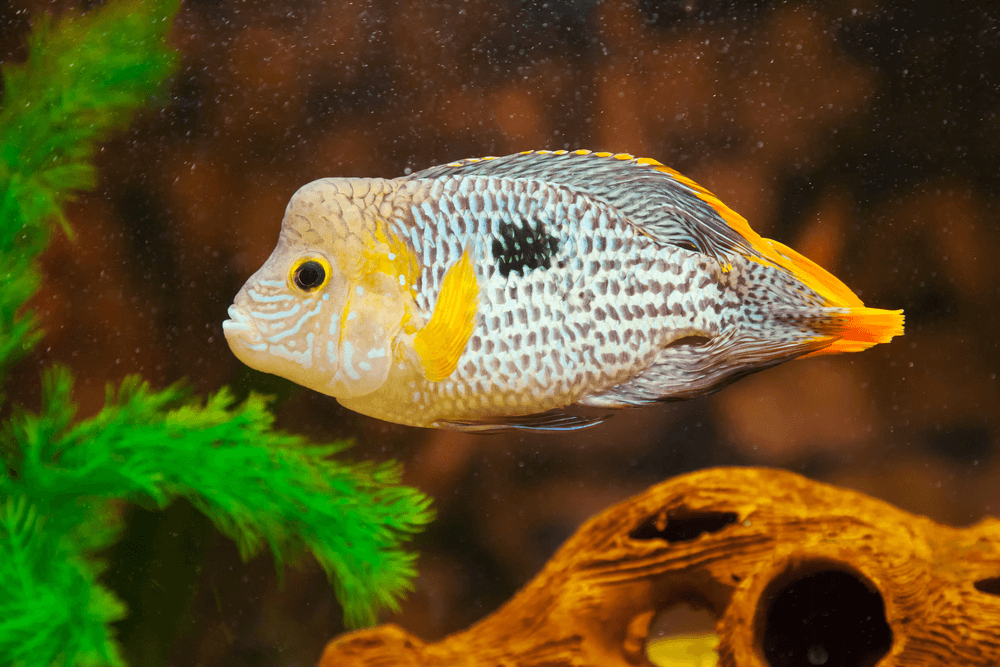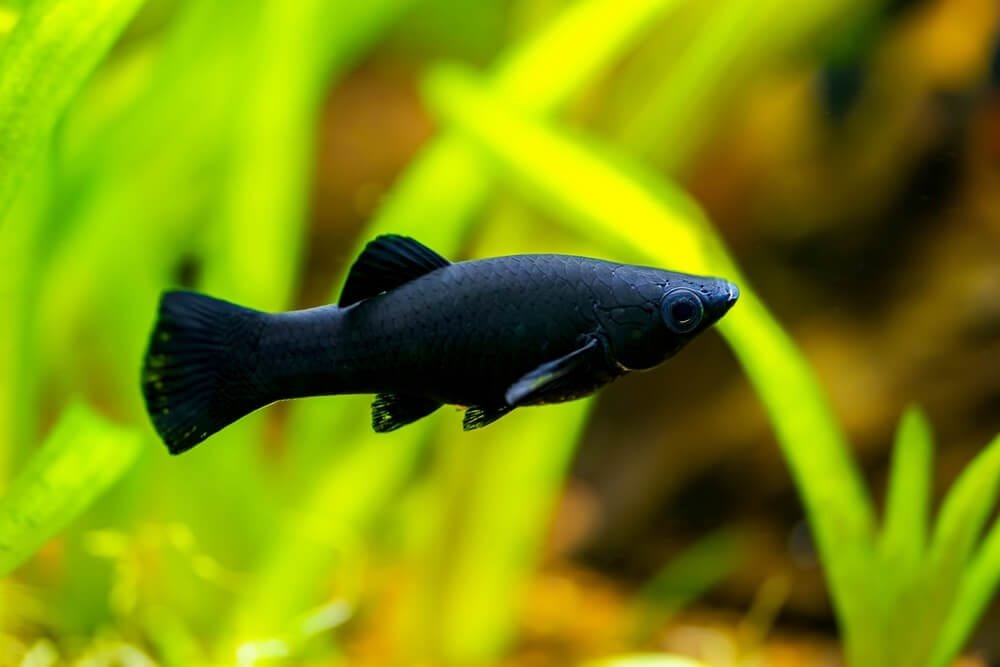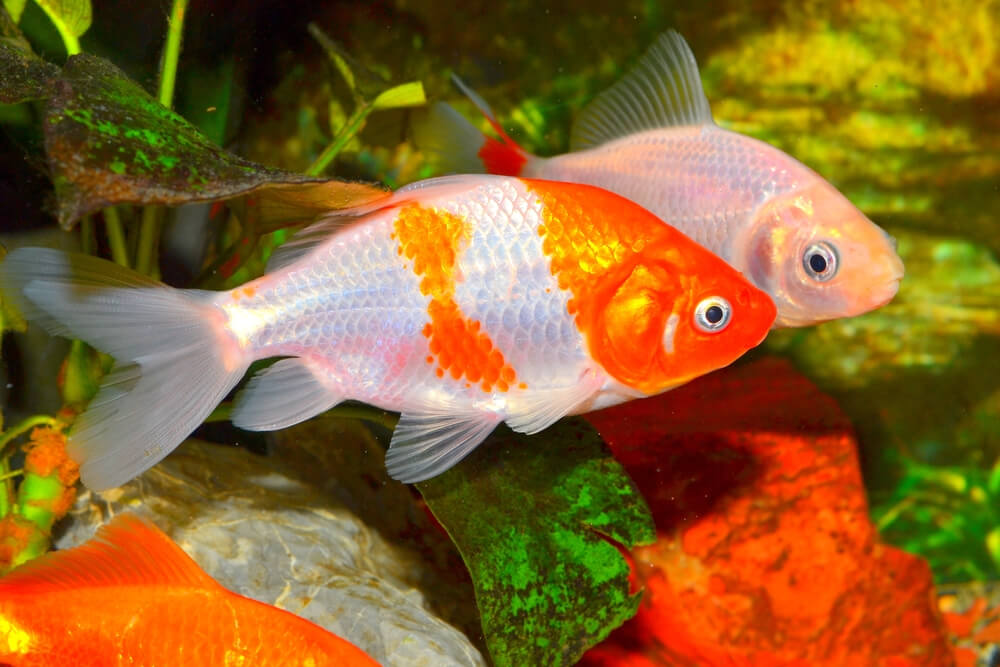You’re in for a fascinating dive into the world of the Juvenile Green Terror Cichlid, a truly captivating fish with a rather deceptive name. Despite its innocent-sounding moniker, this cichlid possesses an unmistakable aggressive nature that sets it apart from other fish in its group. Prepare to be amazed as we uncover the intriguing behavioral traits and territorial tendencies of this juvenile beauty. Let’s embark on an eye-opening journey into the awe-inspiring realm of the Juvenile Green Terror Cichlid.
Aggression in Juvenile Green Terror Cichlid
The juvenile Green Terror Cichlid is known for its aggressive behavior, making it a challenging yet fascinating species to keep in an aquarium. Understanding their aggression is essential for providing the right environment and care to ensure their well-being. This article will delve into various aspects of aggression in juvenile Green Terror Cichlids, including territorial behavior, intra- and inter-species aggression, aggression towards humans, and factors influencing aggressive behavior.
Territorial Behavior
One of the key characteristics of the juvenile Green Terror Cichlid is its strong territorial instinct. They establish and defend their territories fiercely, often displaying aggressive behaviors towards any perceived intruders. This territorial behavior is more pronounced during breeding seasons, but it can still be observed even when not in the breeding phase. Due to their territorial nature, it is crucial to provide the appropriate amount of space and hiding spots to minimize aggressive encounters.
Intra- and Inter-species Aggression
Juvenile Green Terror Cichlids are known to exhibit both intra- and inter-species aggression. Within their own species, male Green Terrors can engage in aggressive displays and behaviors to establish dominance or defend their territory. Females may also display territorial behavior, especially when guarding their laid eggs. Additionally, they can show aggression towards other cichlid species, especially if they occupy similar ecological niches or are perceived as a threat to their territory.
Aggression towards Humans
Although rare, there have been documented cases of aggression displayed by juvenile Green Terror Cichlids towards humans. It is crucial to understand that their aggressive behavior towards humans is typically a result of fear or feeling threatened. These fish have a strong sense of self-defense, and if they feel cornered or scared, they may resort to aggression. It is essential to maintain a calm and non-threatening demeanor when interacting with them to minimize the chances of triggering aggressive behavior.
Factors Influencing Aggressive Behavior
Several factors can influence the aggressive behavior of juvenile Green Terror Cichlids. Firstly, the size of the tank plays a significant role. Insufficient space can lead to increased territorial disputes and aggression as the fish compete for limited resources. Another factor is the presence of suitable hiding spots. Providing ample hiding spots can help reduce stress and minimize aggression among the fish. Additionally, water quality, temperature, and lighting conditions can all impact the fish’s aggression levels. Ensuring optimal conditions and simulating their natural habitat can help mitigate excessive aggression.
Physical Characteristics of the Juvenile Green Terror Cichlid
To better understand the behavior of the juvenile Green Terror Cichlid, it is essential to explore their physical characteristics, including body shape and size, coloration and patterns, and fin spines.
Body Shape and Size
Juvenile Green Terror Cichlids have a streamlined, elongated body shape that allows them to navigate swiftly through the water. As they grow, their bodies become more robust and acquire a more pronounced forehead. Mature males tend to grow larger than females, reaching lengths of around 8 inches, whereas females typically remain slightly smaller, measuring around 6 inches.
Coloration and Patterns
The vibrant coloration of the juvenile Green Terror Cichlid is one of its most striking features. As the name suggests, they display a range of green hues on their body, ranging from olive to turquoise. Along with the greens, they also exhibit various other color accents, including yellow, blue, and orange. These colorations become more pronounced and vibrant when the fish are displaying aggression or during breeding seasons. The patterns on their bodies, such as stripes or blotches, can vary between individuals and may serve as visual cues during territorial disputes.
Fin Spines
Another characteristic feature of the juvenile Green Terror Cichlid is their prominent fin spines. These spines act as both defensive and offensive weapons, serving to intimidate and protect the fish during aggressive encounters. When disturbed or threatened, the fish can erect their dorsal and pectoral fins, making them appear larger and more formidable. These spines can cause injury to both intruders and opponents, making them a formidable opponent when engaged in aggressive behaviors.
Aggressive Displays and Behaviors
The juvenile Green Terror Cichlid employs various displays and behaviors to communicate aggression or defend their territory. Understanding these aggressive displays can help aquarists recognize signs of aggression and intervene when necessary.
Open-Mouthed Threat Display
One of the most common and easily identifiable aggressive displays is the open-mouthed threat display. When feeling threatened or defending their territory, the fish will extend their jaws wide open, showing off their sharp teeth. This display serves as a clear warning to any perceived threat that they are ready to attack if necessary.
Fin Flaring
Fin flaring is another aggressive behavior commonly observed in juvenile Green Terror Cichlids. When provoked or engaged in territorial disputes, they will extend and flare their fins, making their presence more prominent and intimidating. This behavior is often accompanied by vibrant coloration, as the fish attempt to assert their dominance and establish their territory.
Tail Slapping
Tail slapping is a behavior exhibited by the juvenile Green Terror Cichlid during moments of heightened aggression. They rapidly move their tails from side to side, creating a loud slapping sound against the water’s surface. This behavior is often observed during confrontations with other fish or when defending their territory against intruders. The loud slapping noise can serve as both a warning and a means to assert dominance.
Chasing and Nipping
Chasing and nipping are aggressive behaviors commonly seen in juvenile Green Terror Cichlids. When threatened or engaged in territorial disputes, they may chase after other fish in an attempt to intimidate or establish dominance. This chasing behavior can escalate to nipping, where the fish may actually bite or nip at the fins or bodies of other fish. This aggressive behavior allows them to establish their position within the social hierarchy and protect their territory.
Body Slamming
Body slamming is a highly aggressive behavior observed primarily during breeding and territorial disputes. The fish will violently thrash their bodies against rivals or intruders, using their size and strength to exert dominance. This behavior can lead to injuries, so it is crucial to provide enough space and hiding spots to minimize the chances of physical confrontations.
Causes and Triggers of Aggression
Understanding the causes and triggers of aggression in juvenile Green Terror Cichlids is crucial for effectively managing their behavior and creating a harmonious aquarium environment. Several factors can contribute to their aggressive tendencies.
Territorial Defense
Territorial defense is the primary driver of aggression in juvenile Green Terror Cichlids. They are fiercely protective of their chosen territory and will aggressively defend it against any perceived threats. This territorial behavior intensifies during breeding seasons when they become even more protective of their laid eggs and potential fry.
Breeding and Reproductive Behavior
During the breeding phase, juvenile Green Terror Cichlids can become significantly more aggressive. Both males and females will engage in aggressive behaviors to establish dominance, court potential mates, and protect their eggs and fry. It is essential to provide sufficient space and hiding spots during this time to minimize aggression and territorial disputes.
Feeding Competition
Green Terror Cichlids are opportunistic feeders, and competition for food can trigger aggressive behaviors. In a crowded tank with limited food resources, juvenile Green Terrors may become more aggressive towards tankmates in an attempt to secure more food for themselves. Ensuring adequate feeding strategies, such as feeding frequent small portions, can help reduce food-related aggression.
Environmental Factors
Environmental factors, such as inadequate space, poor water quality, inappropriate lighting, or extreme temperatures, can also contribute to increased aggression in juvenile Green Terror Cichlids. It is crucial to maintain optimal conditions and provide a well-suited environment that mimics their natural habitat to minimize stress and aggressive behavior.
Aggression Management and Mitigation
Effectively managing aggression in juvenile Green Terror Cichlids is essential for maintaining a peaceful and thriving aquarium. Here are some strategies to help mitigate aggressive behavior:
Providing Sufficient Territory and Hiding Spots
To minimize territorial disputes, it is crucial to provide ample space and suitable hiding spots within the aquarium. This allows each fish to establish its territory and retreat to a safe zone when feeling threatened, reducing the chances of aggressive encounters.
Companion Selection
When introducing tankmates, it is important to choose species that are compatible with the aggressive nature of juvenile Green Terror Cichlids. Avoid species that are known to be timid or easily intimidated, as they may be targeted and harassed by the Green Terrors. Researching and selecting compatible tankmates can help maintain a harmonious environment.
Feeding Strategy
Implementing a feeding strategy that reduces competition and allows each fish to obtain sufficient nutrition is important. Providing multiple feeding stations and spreading out feedings throughout the day can help minimize food-related aggression. This ensures that each fish has an opportunity to feed without feeling threatened by others.
Water Quality and Environment
Maintaining optimal water quality, appropriate temperature, and suitable lighting conditions are crucial for minimizing stress and aggressive behavior. Regular water changes, filtration, and monitoring water parameters can help create a healthy and stable environment that promotes overall well-being and reduces the likelihood of excessive aggression.
Conclusion
The juvenile Green Terror Cichlid’s aggressive nature adds a captivating aspect to this species but also poses challenges for keeping them in an aquarium. Understanding their territorial behavior, intra- and inter-species aggression, aggression towards humans, and the factors influencing their aggression is essential for providing a suitable environment and care. By implementing appropriate aggression management and mitigation strategies, aquarists can create a harmonious and thriving aquarium for these captivating yet feisty fish.






